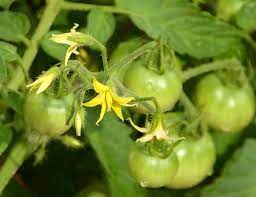Tomatoes are one of the most popular vegetables worldwide. Not only are they delicious and versatile, but they are also very easy to grow in the home garden. However, sometimes even the most experienced gardeners face the problem of their tomato plants not producing enough fruit. While there are many ways to increase tomato flowering, most of them require the use of chemical fertilizers or other synthetic substances. In this article, we will be discussing natural ways to boost tomato flowering and get a bountiful harvest without compromising the quality and health of your plants Dive into the topic of increasing flowering in tomatoes with Succulent Alley.
Choose the right variety
There are many varieties of tomatoes, and each one has its unique characteristics and needs. Some varieties are naturally high-yielding and produce multiple fruits per stem. On the other hand, some varieties may not be as productive and require more attention and care. Choosing the right variety for your garden is essential to increase tomato flowering and fruit set. Determinate varieties, which only grow to a specific height, are a good choice for small gardens, while indeterminate varieties, which continuously grow and produce fruit until the first frost, are suitable for larger gardens.
Adequate Watering
Tomatoes require consistent watering to grow and produce fruits. However, overwatering or underwatering can lead to stunted growth and reduced flower formation. Water your tomato plants once a week, deeply, and thoroughly. Make sure the water reaches the root system. One inch of water per week is sufficient for most tomato plants. Avoid getting the leaves wet as this may lead to the spread of diseases or pests.
Good Soil Composition
Tomatoes thrive in well-draining, loamy soil with a pH range of 6.0 to 7.0. If the soil is too acidic or alkaline, it can negatively affect the plant’s growth and yield. Soil amendments such as compost or organic fertilizer can be added yearly to improve soil quality and nutrient composition. Additionally, properly mulching the base of tomato plants can help to retain moisture and provide a steady supply of nutrients.
Proper Pruning
Tomatoes benefit from proper pruning to maximize flower and fruit production. Remove the suckers, which are the shoots that emerge from the branch crotches between the stem and the main stem. Suckers, if left intact, divert the plant’s energy from the main stem and result in fewer flowers and fruits. Do not remove all of the plant’s foliage, as the leaves are essential in photosynthesis.
Natural Pollinators
Tomatoes are self-pollinating, which means that they do not require pollinators to set fruit. However, natural pollinators such as bees, butterflies, and other insects can increase the rate of flower pollination and improve the overall yield. To attract beneficial insects, plant flowers or herbs nearby, which will provide both nectar and pollen. Also, avoid using insecticides, which can kill beneficial insects and reduce your plant’s yield.
Conclusion:
Growing tomatoes can be a rewarding and enjoyable experience. By following the above natural practices, you can increase tomato flowering and produce a bountiful harvest. Remember to choose the right variety, water your plants adequately, maintain good soil composition, properly prune, and attract natural pollinators. These practices will ensure healthy and productive plants, which will provide you with an abundance of delicious tomatoes.

